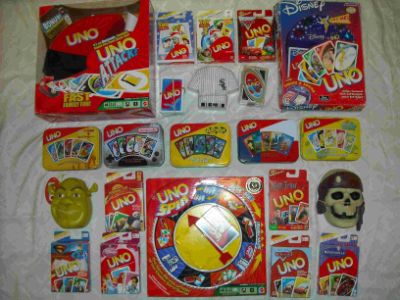Uno Variation: Stacking Draw Cards

Overview
Requirements: 1 or more Uno decks (any variety)
Players: 2+
Time: ~5-10 min/round
Rating: 9/10
Rules
No, the official rules of Uno do not allow you to stack Draw 2 cards or Draw 4 cards. However, most serious Uno players allow rules for stacking draw cards in some form.
One of the most common variants people play with is stacking Draw 2 cards. When a player plays a Draw 2 card, the next player can either draw 2 cards or play another Draw 2 card. If a Draw 2 card is "stacked," the next player must draw 4 cards or play another Draw 2 card (causing the next player to draw 6 cards), and so on.
Stacking can also apply to Draw 4 cards, where a player can play another Draw 4 to cause the next player to draw 8 cards.
Although less common, another variation allows Draw 2 cards to stack on Draw 4 cards and vice versa, which causes the card effects to grow much steeper (drawing 12 cards is not uncommon).
Advantages
Stacking rules are common for a reason. They are extremely fun and they add an additional strategic element to Uno as starting the chain of drawing cards can backfire. This also tends to speed up games a little bit because there is less back and forth of drawing cards as the person with more Draw 2/Draw 4 cards can avoid drawing cards for longer.
Disadvantages
The only disadvantage to this variation is that once a player draws a large number of cards (such as 8 cards), they likely can start a new chain of drawing cards. In the end, this tends to balance the game more than break it.
Review
I am surprised that Mattel has not officially adopted stacking rules into their official rules, at least as a variation. These rules are so well-known and so well-used (for good reason) that they should be standard for any regular Uno player.
Additional Notes
- Beyond stacking draw cards, if you really like the delayed effect mechanism, you can also allow Skip and Reverse cards to be stacked on top of a Draw 2 or Draw 4 card. Both cards have their normal effects, but have the additional benefit of sending the draw 2 sequence to a different player. For example, in a 4 player game, if player 1 played a Draw 2 card, player 2 could play a Skip card, which would then skip player 3 and cause player 4 to draw 2 cards. Player 4 could then extend the chain by playing a Reverse card, causing player 3 to draw 2 cards.


